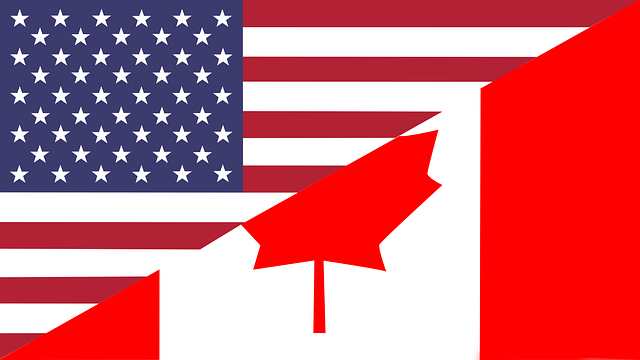As Canada remains heavily connected to the global automotive supply chain, U.S. tariffs on automotive parts and vehicles are having a noticeable ripple effect north of the border. The cost of maintaining and repairing a vehicle in Canada has surged in recent years, largely due to the price hikes stemming from tariff-inflated parts, labor shortages, and economic volatility.
In this article, we’ll explore how U.S. tariffs are influencing repair bills for Canadian drivers, provide key insights on car maintenance, and explain how an extended car warranty from A-Protect Warranty can help shield you from rising costs.
The Canada–U.S. Auto Trade Relationship: Why Tariffs Matter
Canada imports a large volume of automotive components from the United States. Even minor tariffs imposed by the U.S. government on steel, aluminum, electronic systems, or other vehicle parts can significantly affect the pricing structure in Canada. These increased costs are then passed down to consumers through higher repair bills and more expensive aftermarket parts.
Additionally, vehicles assembled in the U.S. and sold in Canada are now more expensive to maintain due to cross-border supply constraints and the added tax burden imposed by these tariffs.
How Tariffs Raise the Cost of Vehicle Repairs in Canada
Tariffs increase the price of vehicle parts in several ways:
- Imported components cost more: Tariffs on U.S. exports mean Canadian importers pay higher duties, which get passed on to customers.
- Repair shop margins are tighter: With thinner profit margins, repair shops must increase labor costs or part markups.
- Longer wait times for parts: Supply chain delays caused by trade tensions can increase vehicle downtime—and rental expenses.
These compounding effects are felt most when dealing with high-tech parts like sensors, infotainment systems, or drivetrain components—areas where costs have already surged in recent years.
Average Repair Costs in Canada: Before and After Tariffs
Let’s take a closer look at how repair prices have changed over time due to supply chain disruption and tariff-related cost inflation:
| Repair Type | Average Cost (Before Tariffs) | Average Cost (After Tariffs) |
|---|---|---|
| Transmission replacement | $3,200 | $4,600 |
| Electronic sensor repair | $700 | $1,100 |
| Air conditioning system | $1,500 | $2,300 |
| Suspension system | $900 | $1,700 |
| Battery & charging (EV/Hybrid) | $2,000 | $3,200 |
While many of these increases might seem modest individually, they represent a significant burden when repairs pile up unexpectedly.
Why Canadians Are Keeping Cars Longer
With the cost of new vehicles increasing and inventory shortages persisting, many Canadians are holding on to their cars longer than they used to. A vehicle that might have been traded in after 5–6 years is now staying on the road for a decade or more.
The challenge? Older vehicles are far more likely to experience costly mechanical failures. This makes smart car maintenance—and protective measures like extended warranties—more crucial than ever.
Car Maintenance Tips to Minimize Costly Repairs
Regular maintenance is the most effective way to keep your car running efficiently and to avoid larger, more expensive repairs caused by neglect. Here’s a breakdown of essential maintenance tasks every driver should follow:
| Task | Interval | Why It Matters |
|---|---|---|
| Oil & filter changes | Every 5,000–8,000 km | Reduces engine wear and improves efficiency |
| Tire rotation & pressure checks | Every 10,000 km | Extends tire life and boosts safety |
| Brake inspections | Every 20,000 km | Ensures responsive stopping power |
| Coolant and fluid flushes | Annually | Prevents overheating and component corrosion |
| Battery check | Every winter | Avoids no-start conditions in cold weather |
The Role of Extended Warranties in Combating Tariff Costs
While maintenance helps prevent breakdowns, it doesn’t eliminate the risk of sudden failure due to parts defects or wear-and-tear. That’s where extended warranties become essential.
A quality extended car warranty covers the cost of parts, labor, and in many cases, diagnostics for covered repairs. As tariffs push prices higher, having an extended warranty acts as a financial buffer against these external factors.
Top Benefits of an Extended Warranty
- Financial predictability: Eliminate surprise repair bills
- Nationwide coverage: Get repairs done anywhere in Canada
- Transferable benefits: Boost your resale value
- Roadside assistance: Many plans offer towing, lockout, battery boosts
- Adaptability: Tailored coverage for used, new, or leased vehicles
At A-Protect Warranty, our plans are designed to adapt to your needs—protecting both your vehicle and your wallet from price shocks.
Extended Warranty vs. Out-of-Pocket Costs: A Side-by-Side
Here’s a quick comparison of how an extended warranty stacks up against paying out-of-pocket in the current climate:
| Repair Scenario | Out-of-Pocket Cost | With A-Protect Warranty |
|---|---|---|
| Engine rebuild | $5,000–$7,000 | $0 (after deductible) |
| Electric system failure | $1,200–$1,800 | $0 (after deductible) |
| Climate control malfunction | $2,200 | $0 (after deductible) |
Who Should Consider an Extended Warranty?
While every driver can benefit from vehicle protection, extended warranties are especially valuable for:
- Owners of vehicles over 3 years old
- Drivers keeping their vehicles past the manufacturer’s warranty
- People with imported vehicles impacted by tariff-inflated part costs
- Commuters and long-distance drivers
- Owners of luxury or hybrid vehicles
Final Thoughts: Be Proactive, Not Reactive
U.S. tariffs and trade disruptions aren’t going away anytime soon. Canadian drivers need to take a proactive approach to protect their vehicles from unpredictable price spikes and expensive repairs.
Regular maintenance is your first line of defense. Pairing it with a dependable extended warranty from A-Protect is your safety net.
Contact us today to learn how we can help you secure long-term protection from market uncertainty—and keep your vehicle running smoothly without draining your savings.



